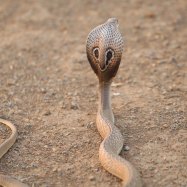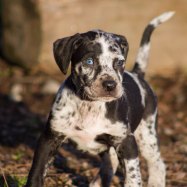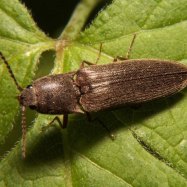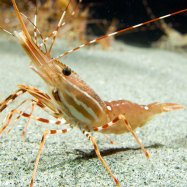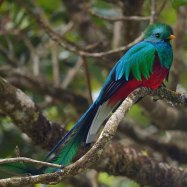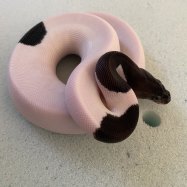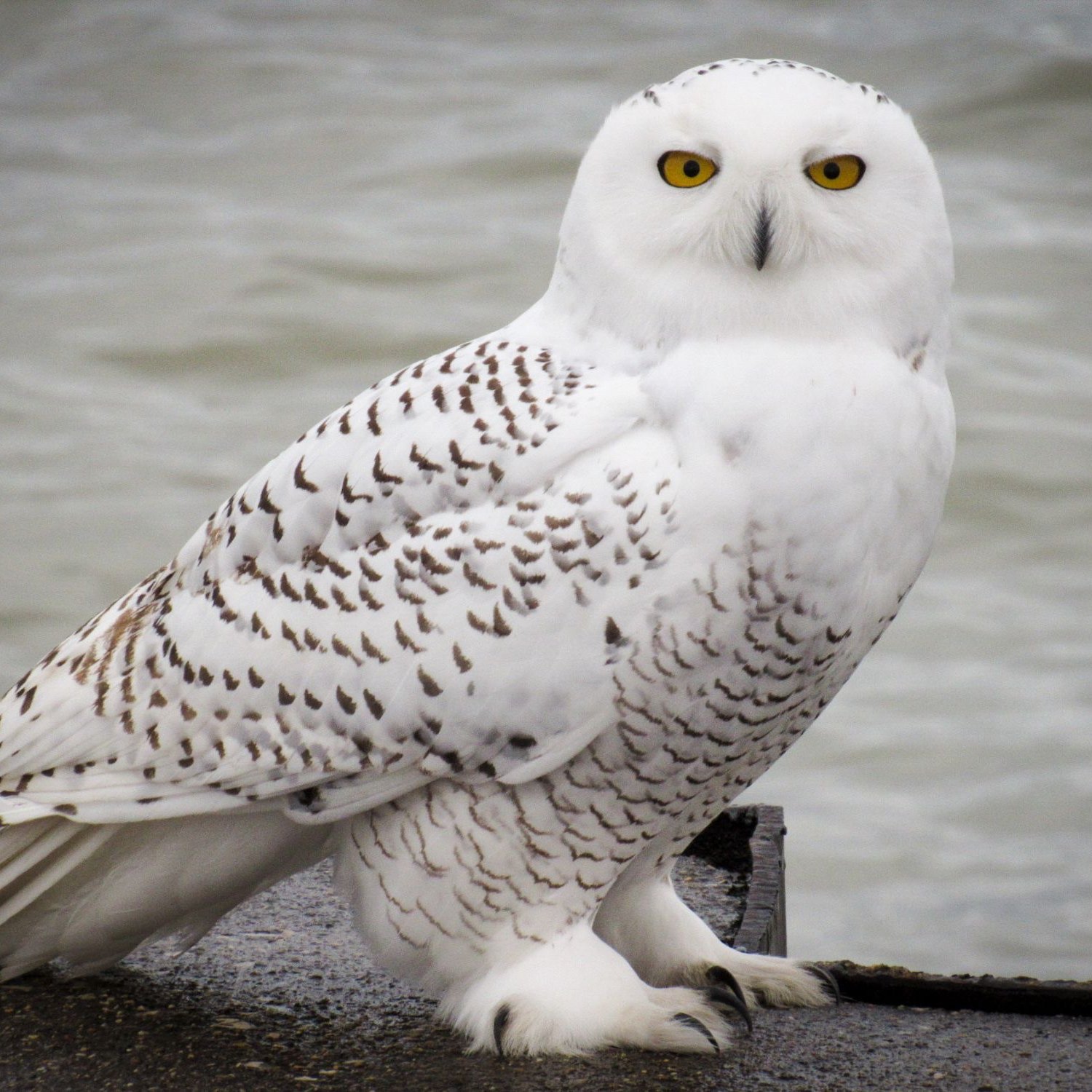
Snowy Owl
20 - 28 inches (51 - 71 cm)
The Snowy Owl is a majestic bird of the northern hemisphere, known for its stunning white feathers. With a length of 20-28 inches and being part of the Strigidae family, this large and stocky creature is a sight to behold. Keep your eyes peeled for this beautiful creature on your next outdoor adventure! #SnowyOwl #NorthernHemisphere #Strigidae #Birds #Wildlife
Animal Details Summary:
Common Name: Snowy Owl
Kingdom: Animalia
Habitat: Arctic tundra, flat grasslands, marshes
The Snowy Owl: The Majestic White Predator of the Arctic
Imagine standing in the vast expanse of the Arctic tundra, surrounded by nothing but snow and ice. Suddenly, a large, white bird with piercing yellow eyes swoops down from the sky, landing gracefully on a nearby patch of ground. You have just encountered the magnificent Snowy Owl.Known by its scientific name Bubo scandiacus and its common name Snowy Owl, this majestic bird of prey is a sight to behold in its natural habitat Snowy Owl. With its striking appearance and unique characteristics, the Snowy Owl has captured the attention of humans for centuries, making it a fascinating topic of study and observation.
In this article, we will delve into the world of the Snowy Owl, exploring its kingdom, phylum, class, order, family, habitat, feeding habits, geographical distribution, and more. So, let's take a journey into the life of this beautiful white predator of the Arctic.
Kingdom: Animalia
First, let's start with the basics. The Snowy Owl belongs to the kingdom Animalia, which is a biological classification that includes all animal species. This means that it shares several characteristics with other animals, such as the ability to move, breathe, reproduce, and sense its surroundings.Phylum: Chordata
Next, the Snowy Owl falls under the phylum Chordata, which includes all animals with a notochord at some stage of their life. The notochord is a flexible rod-like structure that runs along the length of the animal's body, providing it with support and stability.Class: Aves
The Snowy Owl belongs to the class Aves, which includes all birds Swedish Elkhound. As a member of this class, the Snowy Owl has certain characteristics that distinguish it from other animals, such as feathers, a beak, and the ability to fly.Order: Strigiformes
Moving on, the Snowy Owl falls under the order Strigiformes, which includes all owl species. This is a large order, with over 200 different owl species found all over the world. Owls are characterized by their large heads, round facial disks, sharp talons, and keen eyesight.Family: Strigidae
Within the order Strigiformes, the Snowy Owl belongs to the family Strigidae, also known as the "typical owls." This family includes some of the most well-known and widespread owl species, such as the Great Horned Owl and the Barn Owl.Habitat: Arctic Tundra, Flat Grasslands, Marshes
The Snowy Owl has a diverse habitat range, including Arctic tundra, flat grasslands, and marshes. In the summer, they can be found in open tundra and prairie regions, where they nest and raise their young. During the winter, they move to more southern regions where food is more abundant.Their main habitat is the Arctic tundra, which is a vast, treeless area with low temperatures and high winds. Here, the Snowy Owl can be found perched on the ground or on low tree branches, using its excellent camouflage to blend in with the snowy landscape.
Feeding Method: Carnivorous
Like all birds of prey, the Snowy Owl is a carnivorous animal, meaning it feeds on other animals. Its diet consists mainly of small mammals, such as lemmings, rodents, and rabbits. However, they have also been known to catch larger prey, including birds and fish.One unique aspect of the Snowy Owl's feeding method is its ability to hunt during the day and at night. Unlike most owls, which are primarily nocturnal hunters, the Snowy Owl is active during both day and night, making it a highly efficient predator.
Geographical Distribution: Arctic Regions of North America, Europe, and Asia
The Snowy Owl has a wide geographical distribution, found in the Arctic regions of North America, Europe, and Asia. In North America, they can be found in Canada, Alaska, and some northern states, while in Europe and Asia, they are found in Scandinavia, Russia, and Siberia.They are also known to migrate southwards during the winter, sometimes reaching as far as the northern United States and even some European countries such as Germany and the Netherlands. This migration is necessary to find food and survive the harsh winter conditions of the Arctic.
Country of Origin: Canada
While the Snowy Owl can be found in several countries, its country of origin is Canada. The owl is even featured on the Canadian $50 bill as a symbol of the country's vast northern wilderness.Location: Northern Hemisphere
The Snowy Owl is found exclusively in the Northern Hemisphere, as the Arctic is the only region on Earth with suitable climatic and habitat conditions for this species to thrive. This makes it a unique animal that can only be seen and appreciated in the top half of the globe.Animal Coloration: Mainly White with Black Barring
One of the most distinguishing features of the Snowy Owl is its striking coloration. They are mainly white, with some black barring on their wings and tail. This coloration provides excellent camouflage in the snowy tundra, making it almost invisible to its prey and potential predators.Interestingly, the Snowy Owl's coloring changes with the seasons. In the summer, they have gray and black markings on their wings and back, which gradually fade into a pure white winter plumage. This change in color helps them blend in with their surroundings during both summer and winter.
Body Shape: Large and Stocky
The Snowy Owl is a large and stocky bird, with a body that is built for strength and hunting prowess. They have large, powerful talons and a sharp, hooked beak that they use to catch and tear into their prey. Their broad, rounded wings also allow them to fly silently, making them even more efficient hunters.Length: 20 - 28 Inches (51 - 71 cm)
With a wingspan of 4.2 - 4.8 feet (1.3 - 1.5 meters), the Snowy Owl is one of the largest owl species in the world. However, it is not the biggest owl by length. On average, they measure between 20 to 28 inches (51 to 71 cm) in length, with females being slightly larger than males.The Snowy Owl: An Icon of the Arctic
In conclusion, the Snowy Owl is a fascinating animal that has captured the hearts and minds of humans for centuries. Its unique characteristics, such as its striking coloration, large size, and dual hunting abilities, make it a top predator in its Arctic habitat.While it may be a challenging task to spot a Snowy Owl in the wild, the opportunity to witness this magnificent bird in action is an experience that is not to be missed. So, next time you find yourself in the Arctic tundra, keep your eyes peeled for this iconic white predator.

Snowy Owl
Animal Details Snowy Owl - Scientific Name: Bubo scandiacus
- Category: Animals S
- Scientific Name: Bubo scandiacus
- Common Name: Snowy Owl
- Kingdom: Animalia
- Phylum: Chordata
- Class: Aves
- Order: Strigiformes
- Family: Strigidae
- Habitat: Arctic tundra, flat grasslands, marshes
- Feeding Method: Carnivorous
- Geographical Distribution: Arctic regions of North America, Europe, and Asia
- Country of Origin: Canada
- Location: Northern Hemisphere
- Animal Coloration: Mainly white with black barring
- Body Shape: Large and stocky
- Length: 20 - 28 inches (51 - 71 cm)

Snowy Owl
- Adult Size: Length: 20 - 28 inches (51 - 71 cm), Wingspan: 4.2 - 4.8 feet (1.3 - 1.5 meters), Weight: 3.5 - 6.6 pounds (1.6 - 3 kilograms)
- Average Lifespan: 10 - 12 years
- Reproduction: Sexual
- Reproductive Behavior: Monogamous
- Sound or Call: Distinct low, raspy hooting or barking sound
- Migration Pattern: Nomadic or irruptive migration
- Social Groups: Solitary or in small family groups
- Behavior: Nocturnal, hunts during daylight in the Arctic summer
- Threats: Habitat loss, climate change, hunting
- Conservation Status: Least Concern
- Impact on Ecosystem: Regulates populations of small mammals
- Human Use: Popular in falconry and as pets
- Distinctive Features: Large size, white plumage, yellow eyes
- Interesting Facts: The Snowy Owl is known as an Arctic bird and is one of the largest owls in the world. It has excellent camouflage in its snowy habitat, and its feathers provide insulation against the extreme cold temperatures. Snowy Owls can rotate their heads up to 270 degrees to look around. They are skilled hunters and mainly feed on small mammals like lemmings and voles. Unlike most owls, Snowy Owls are diurnal, meaning they are active during the day. They have been featured in popular culture, notably in the Harry Potter series.
- Predator: Predators include wolves, Arctic foxes, and other large birds of prey.
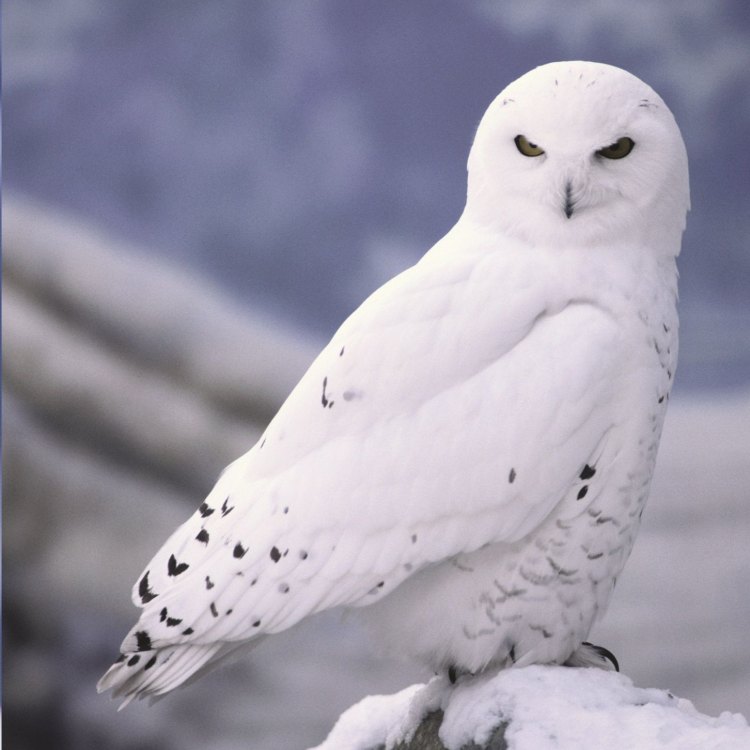
Bubo scandiacus
The Majestic Snowy Owl: An Arctic Beauty
Nestled in the frozen tundras of the Arctic, the Snowy Owl (Bubo scandiacus) stands out with its stunning white plumage and piercing yellow eyes. With a wingspan of over 4 feet and weighing up to 6.6 pounds, it is one of the largest owl species in the world. This magnificent bird, also known as the "arctic ghost" or "snowy hunter," has captivated the hearts and imaginations of people for centuries, and for good reason PeaceOfAnimals.Com.Despite its nickname, the Snowy Owl is not just confined to the Arctic. It can also be found in the northern regions of North America, Europe, and Asia. Its striking white feathers serve as excellent camouflage against the snowy landscape, making it nearly invisible to its prey and predators alike.
Adult Size: Length: 20 - 28 inches (51 - 71 cm), Wingspan: 4.2 - 4.8 feet (1.3 - 1.5 meters), Weight: 3.5 - 6 Senepol Cattle.6 pounds (1.6 - 3 kilograms)
The Snowy Owl has a robust build, with a round head, sturdy body, and broad wings. Its large, yellow eyes are perfectly adapted for hunting in low light conditions. This owl also has keen hearing, enabling it to detect prey even under thick snow. These magnificent birds have unique features that set them apart from other owl species, making them a popular subject for bird enthusiasts and photographers.
Average Lifespan: 10 - 12 years
Snowy Owls have an average lifespan of 10 to 12 years in the wild. In captivity, they can live up to 30 years. However, their numbers are declining due to various threats, including habitat loss, climate change, and hunting.
Reproduction: Sexual
Snowy Owls are sexually reproducing animals, meaning they require both a male and female to produce offspring. They reach sexual maturity at two years of age, and they typically breed in the early spring. The male owl performs elaborate courtship displays, such as soaring high in the air and performing aerial acrobatics, to attract a potential mate.
Reproductive Behavior: Monogamous
Once a pair has formed, Snowy Owls are monogamous, meaning they mate for life. They typically stay together throughout the breeding season and may even return to the same nesting site in subsequent years. Both parents play a significant role in raising their young, with the female incubating the eggs while the male hunts for food.
Sound or Call: Distinct low, raspy hooting or barking sound
The Snowy Owl is not known for its melodious songs like other bird species. Instead, it emits a unique sound that resembles a low, raspy hoot or a bark. This sound is used to attract mates and communicate with other owls in its territory.
Migration Pattern: Nomadic or irruptive migration
Unlike most bird species that migrate in search of food and better breeding grounds, Snowy Owls have a unique migration pattern. They are considered nomadic or irruptive migrants, meaning they may migrate hundreds or thousands of miles based on the availability of food. This pattern is closely linked to their main food source and can vary from year to year.
Social Groups: Solitary or in small family groups
Snowy Owls are solitary hunters and are seldom seen in groups. However, during the breeding season, a male and female pair may form a small family group. Snowy Owls are territorial and will defend their nesting site from other pairs.
Behavior: Nocturnal, hunts during daylight in the Arctic summer
As with most owl species, Snowy Owls are primarily nocturnal, meaning they are active at night. However, due to the Arctic's long summer days, they are diurnal, meaning they are also active during daylight hours. This adaptation allows them to capitalize on the abundance of prey available during the Arctic's short summer months.
Threats: Habitat loss, climate change, hunting
The Snowy Owl's population is declining due to several factors, including habitat loss and degradation from human activities, such as oil and gas development, and agriculture. Climate change is also affecting their breeding and hunting grounds, with warmer temperatures and changes in snow cover disrupting their hunting behaviors. Additionally, Snowy Owls have been hunted for their feathers, which are highly prized for their beauty and used in traditional costumes and handicrafts.
Conservation Status: Least Concern
Despite these threats, the Snowy Owl is listed as "Least Concern" on the IUCN Red List of Threatened Species. This status is due to its vast range and relatively stable population.
Impact on Ecosystem: Regulates populations of small mammals
As top predators, Snowy Owls play an essential role in regulating the populations of small mammals, such as lemmings and voles, which are their primary food source. In turn, this helps maintain the balance of the ecosystem, ultimately benefiting other species.
Human Use: Popular in falconry and as pets
Snowy Owls have long captivated humans, and they have been used in falconry for centuries. Their large size and hunting abilities make them a popular choice for falconers. In some cultures, they are also kept as pets, although this practice is discouraged due to their wild nature and specialized dietary and habitat needs.
Distinctive Features: Large size, white plumage, yellow eyes
The Snowy Owl's distinctive features are what make it one of the most recognizable owls in the world. Its large size and all-white plumage make it a striking sight against the Arctic's snowy backdrop. Its piercing yellow eyes add to its mystery and beauty, making it a favorite among photographers and bird lovers.
Interesting Facts: The Snowy Owl is known as an Arctic bird and is one of the largest owls in the world. It has excellent camouflage in its snowy habitat, and its feathers provide insulation against the extreme cold temperatures. Snowy Owls can rotate their heads up to 270 degrees to look around. They are skilled hunters and mainly feed on small mammals like lemmings and voles. Unlike most owls, Snowy Owls are diurnal, meaning they are active during the day. They have been featured in popular culture, notably in the Harry Potter series.
The Snowy Owl's unique adaptations and behaviors have fascinated humans for centuries. These magnificent birds are not only a symbol of the Arctic, but they also play a vital role in maintaining the delicate balance of the ecosystem. It is our responsibility to protect them and their habitat so that future generations can also marvel at their beauty and mystery.
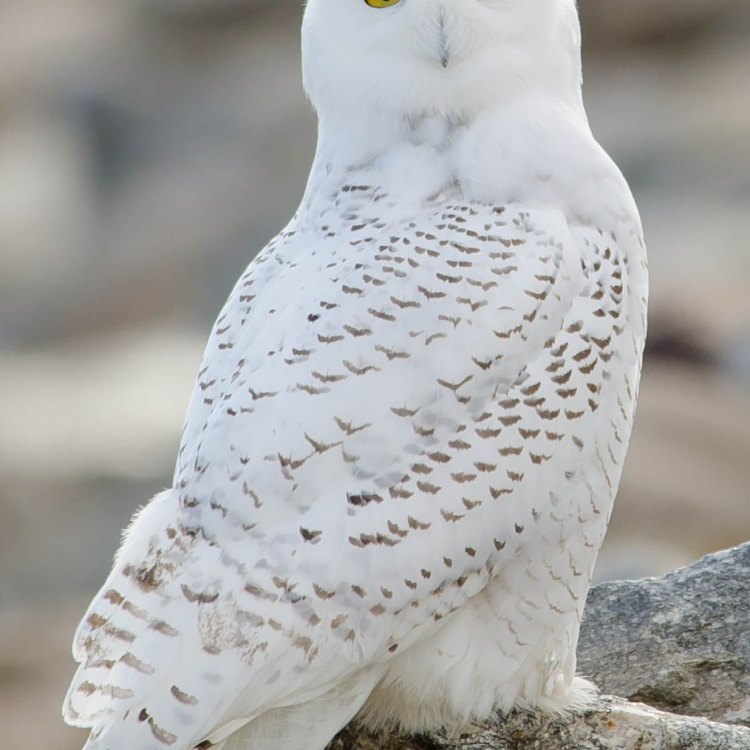
The Snowy Owl: The Majestic White Predator of the Arctic
Disclaimer: The content provided is for informational purposes only. We cannot guarantee the accuracy of the information on this page 100%. All information provided here may change without prior notice.

